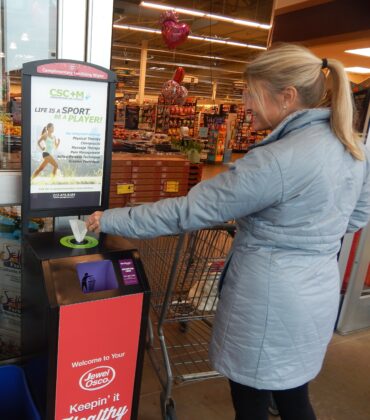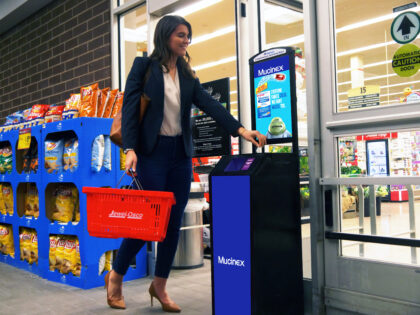What Is In-Store Advertising?
In-store advertising is marketing that happens inside physical retail stores. It helps boost product sales by grabbing customer attention and directing them to products. In-store advertising can create a personalized experience that helps retailers build brand loyalty and increase revenue.
Examples In Retail Stores
There are plenty of successful types of marketing campaigns, but Terraboost takes an innovative approach through hand sanitizing billboards which ensures consumers engage with the advertised business.
Our billboards make store customers stop for a moment to view the advertisement and create a positive connection with the featured brand. These in-store advertisements have been wildly successful with 71% of people more likely to purchase a product offered on hand sanitizing displays.
Terraboost sanitizing kiosks have been featured at some of the biggest retail chains like Walgreens, Michaels, and even mall networks like Simon Malls.
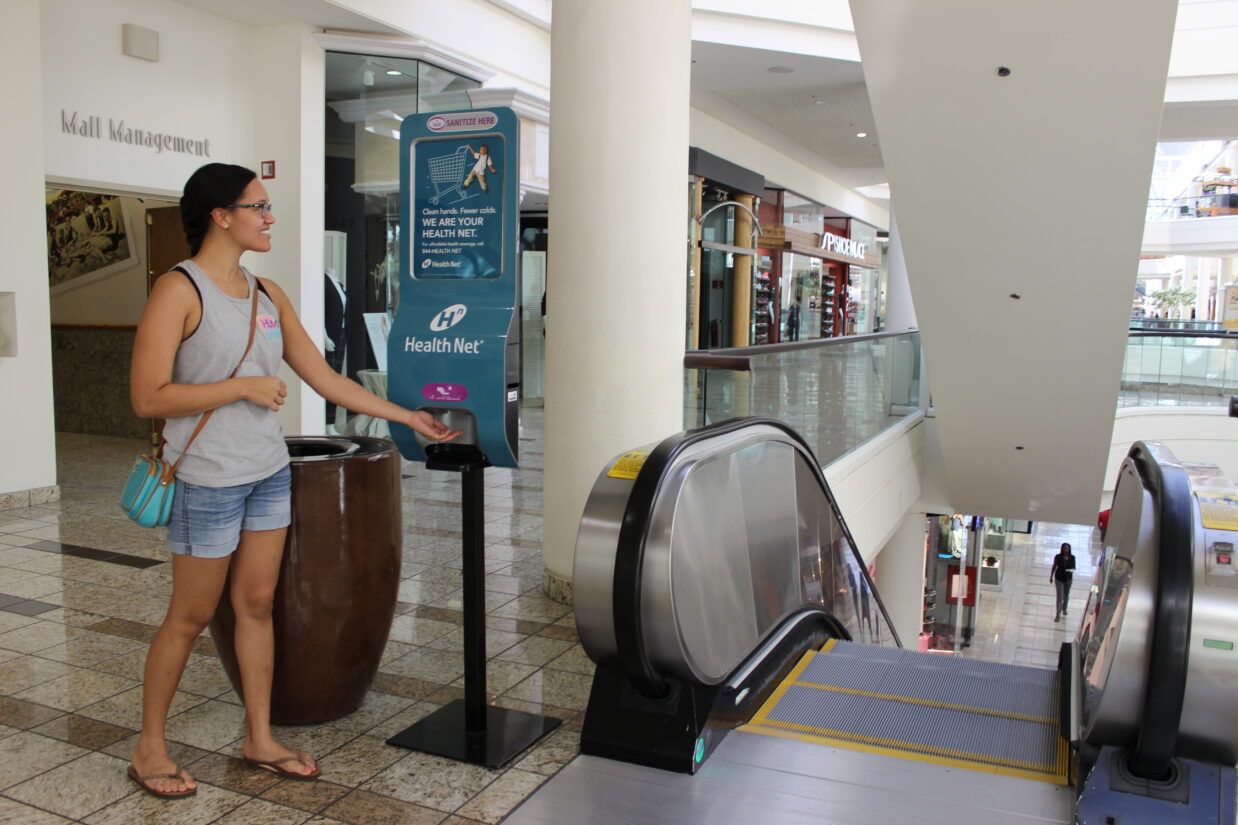
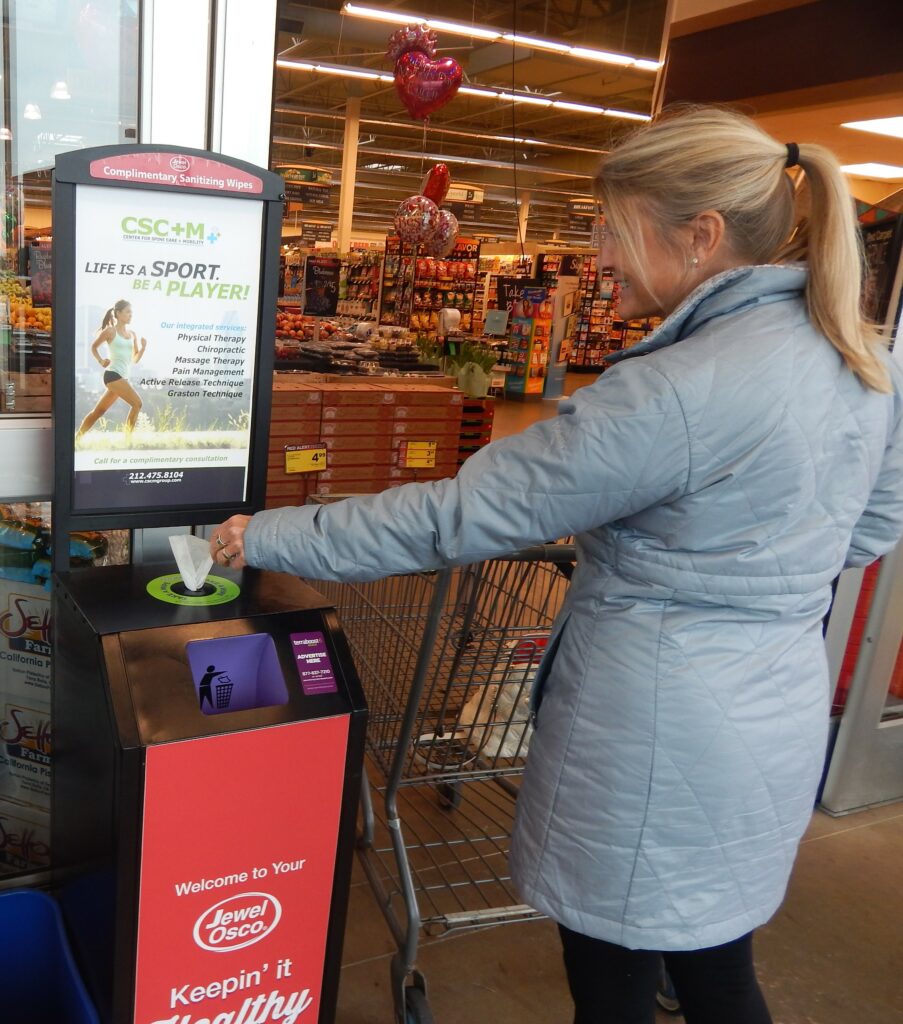
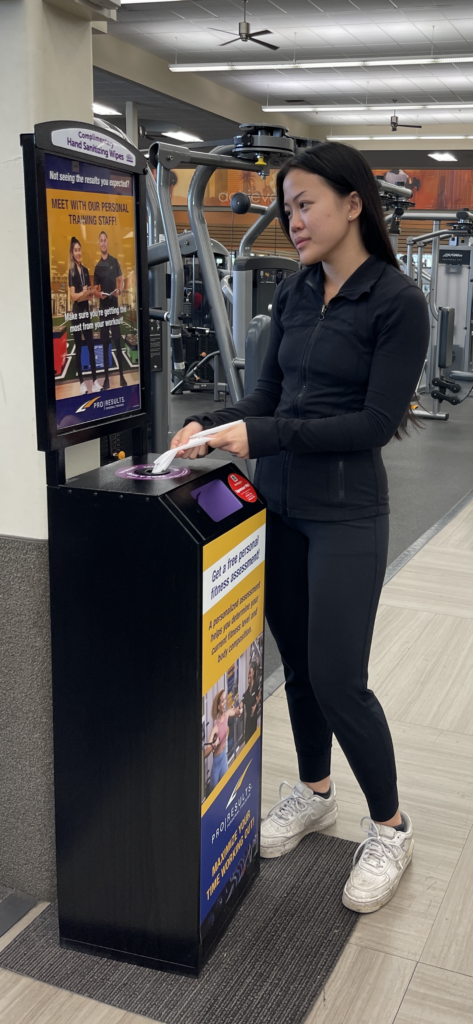
Benefits Of In-Store Advertising
While we do live in an increasingly digital world, over 80% of all sales are still conducted through in-store shopping. That means if you are only utilizing online ads, you are missing the opportunity to influence the bulk of shoppers.
Let’s dive into the benefits in-store advertising is known to bring:
- Sales boost: In-store displays have been shown to generate an average 20% sales lift which can increase up to 50% if the display is located near the point of purchase– the impulse buy effect.
- Brand recognition: People are more likely to make an in-store purchase when they see advertising for a brand they already viewed online. So, when online marketing campaigns fail to make conversions, in-store advertising can pick up the scraps.
- Product discovery: When consumers come across in-store advertising displays, they feel as though they have discovered the brand themselves. The feeling of discovery makes consumers trust brands, and it is something that online pop-up ads inherently can’t do.
In-store Advertising Cost
The cost of an in-store advertising campaign can vary greatly depending on which stores you’re targeting, how many you want to advertise in, and where in the store you want those ads to be.
For a single store, an advertising campaign can cost anywhere between $100-$400 per month after you’ve designed the ad, printed it, and paid store installation fees. Note that some of these costs will be recurring and the monthly pricing will depend upon how many locations you’re advertising in and for how long.
Don’t let those numbers spook you though! You can always get in touch with a Terraboost agent who will provide a quote and the expert industry knowledge we’ve gained through working with top name brands and partnerships with retail chains.
4 Steps To A Successful In-Store Advertising Campaign
Here are the 4 steps to a successful in-store advertising campaign:
- Develop your advertising strategy
- Design your advertisement
- Target the right location(s)
- Measure results
Step 1: Develop Your Advertising Strategy
This step is going to take some introspection as you consider how you wish to promote your business. You’ll need to form a concrete understanding of your target audience, desired messaging, and budget.
The better understanding you have of this foundation, the better your marketing strategy will perform.
Step 2: Design Your Advertisement
Engaging advertisements are crucial, so the best in-store ads are more than just an informational poster.
Studies have shown that the best ads attract consumers by appealing to one or more of their five senses. Creating an ad with bright and appealing colors is one way to do it, but there are some creative alternatives.
At Terraboost, we get consumers to physically engage with your ads by featuring them on sanitization wipe stations. Researchers have shown that the more points of sensory contact there are, the more memorable traces a brand leaves behind. So, a brightly colored ad that also offers the consumer a sanitizing wipe has the best chance of leaving a favorable subconscious response that influences shopping behavior.
Step 3: Target the Right Locations
The number of store locations you advertise in will largely depend on your budget, but there are two other important location factors to consider for ensuring success.
Store Type
You can do grocery store promotions in places like Kroger, in-store pharmacy advertising in CVC, or a retail chain like Michaels will all depend on what’s the best match for your target audience and brand identity.
Your product doesn’t need to be sold on the store’s shelves, but you do need to be sure that the general customer base would be interested in your product or services.
Ad Placement
Approximately 70% of purchase decisions are made in-store and you can help guide these sales towards your product with proper ad placement.
Point Of Purchase (POP) ads are featured right next to your product and competing brands. These ads will familiarize consumers with your product and have been shown to significantly lift sales– however, this ad space is expensive.
Point Of Sale (POS) are placed at the checkout section of grocery stores, retail shops or pharmacies.
If you think point of purchase ad space is too expensive, a good alternative is the ad-space at the front doors and waiting areas of stores. This advertisement real estate is where Terraboost excels and has promoted countless brands across over 120,000+ wellness kiosks installed at these prime locations.
Step 4: Measure Results
Once your in-store marketing campaign is active, you’ll need to keep a close eye on it. Your sales numbers before and after implementing the ad program are the most important statistics to track. If the monthly sales lift is greater than the monthly cost of your marketing campaign, that means you’re off to a great start!
It’s also not bad to break even for an in-store marketing campaign as your displays will continue to grow your brand recognition which should last even after your campaign has ended.
Digital VS Non-Digital In-Store Ads
Digital ads can come in various forms, such as LED displays, projection systems, or interactive kiosks. There are some real advantages to digital ads as they can incorporate interactive elements through touch screens and can be easily updated with new promotional messaging.
However, there are two downsides to this form of advertisement. For one, the upfront cost of digital signage is far greater than non-digital. Also, some consumers experience “digital fatigue” from being bombarded with digital media too frequently, making them less responsive to this form of messaging.
Non-digital ads lack the versatility of their digital counterparts, but they are far cheaper to deploy and avoid the “digital fatigue” problem. Plus, some older consumers tend to avoid the interactive elements of digital advertisements, so if that’s your target audience, non-digital may be the way to go.
Get Started With In-Store Advertising at Over 120,000 Locations
Terraboost can promote your brand through an in-store advertising campaign across our network of 120,000+ wellness billboards that deliver up to 8.8 billion monthly engagements. Our advertisement strategy has a proven track record with 94% of people having a positive opinion of company-sponsored hand sanitizing billboards and 66% of shoppers engaging with our in-store kiosks.
If you want your brand advertised in stores like Walgreens, Giant, Michael’s, and many others, get in touch with a Terraboost agent today.

